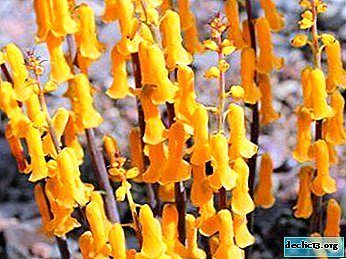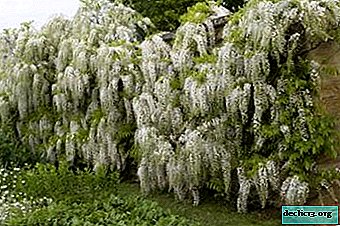Compatibility of radish with other crops: after which and with what to plant a vegetable and why?

Radish has a nondescript appearance and a very specific taste, but lovers of this root crop are still there. Many farmers grow radish, because in addition to its beneficial properties and a wide range of applications, it is also very unpretentious in maintenance.
However, there are some features of its cultivation: after which it is better to plant this root crop in the garden; what vegetables can be planted after this crop next year and why. All the nuances will be discussed in this article.
For what reasons is it important to consider cultural compatibility?
The fact is that an improperly chosen neighbor can inhibit this vegetable and cause various diseases. This can cause a fungal infection, a weakened culture or an influx of pests. Some crops can adversely affect the taste and juiciness of root crops.
But friendly vegetables contribute to a rich and tasty harvest.
The proper arrangement of two types of vegetables can be a natural way of protecting against pests, one species can protect the other.Vegetable crops have different requirements for irrigation and the degree of illumination of the selected place. It is important to consider the differences in the root system. If the roots of neighbors are located at the same depth, then both cultures will begin to take moisture and nutrients from each other. Layering of the roots will help to avoid this problem.
Then what is better to place on the bed and why?
The best pioneers for radishes will be the legume family. Best to stay at:

- beans;
- peanuts
- lentils;
- peas.
Radish will grow well after:
- dill;
- pepper;
- cucumbers
- zucchini;
- eggplant.
Larvae and pathogens of diseases that can remain after these crops will not affect the condition of root crops.
Winter varieties can be planted after harvest:
- feather onions;
- various varieties of salad;
- green peas.
But Daikon or Japanese radish after peas will not please the wealth of the crop. It will grow poorly after wild strawberries.
Is it worth growing root crops in one place for several years?
The alternation of crops will not allow the depletion of the soil, so it is best to plant radish in those beds where it was already grown 2-3 years ago. If the location cannot be changed, then you can drop the vegetable to the old place, but at the same time careful preparation of the land is required:
- dig a bed;
- feed the soil;
- disinfect with a spill of a solution of chemicals.
Do not neglect fertilizers and disinfection. This is a beneficial effect on the soil, contributing to a further comfortable planting for the next crop.
What vegetables to plant after the crop the next year and why?
 Before planting a new crop instead of radish, you must:
Before planting a new crop instead of radish, you must:
- clean the site of plant debris;
- dig the beds.
It is allowed to plant any crops that do not belong to the same family as the radish (Cruciferous).
The fact is that pathogens of diseases characteristic of one or another type of vegetables may remain in the soil. therefore Experienced farmers are advised to alternate the planting of certain crops. Do not forget about the depletion of the soil. Radish can pick up useful components or vice versa leave a good fertilizer after itself.
Common pests with radish are absent in tomatoes and eggplant. At the same time, the smell of tomatoes effectively scares off the fly and aphids that overcome cruciferous.
You can plant crops with which the radish has a different level of rhizome. These may include:
- legumes;
- melon;
- cucumbers
- green onions.
What to place in the garden next to the root crop?
For a joint planting of crops, it is best to choose a bed about one meter wide. The main culture should be placed in the center, and an accompanying one should be planted along the edges. in this case, the radish is considered to be the accompanying culture.
Root crops of radish ripen faster than tomatoes or potatoes planted nearby on the same bed, which in the process of ripening begin to occupy more and more space. By the time the neighbor ripens, the radish will already be collected and free up additional space.It is better not to plant a radish next to horseradish, basil or onions. If the garden is small and you need to plant a radish in the neighborhood with someone, then it is better to opt for planting bush beans. She, like tomatoes, will scare away insects and, among other things, improve the taste of root crops. Radish can be placed along the edges of the garden, on which a leaf or head lettuce is planted.
Adhering to the rules of crop rotation, you can achieve a rich harvest and the highest taste of vegetables. Observing the simple recommendations from this article, you can get not only high-quality radish root crops, but also carry out the backlog for the next planting in the future planting.

















